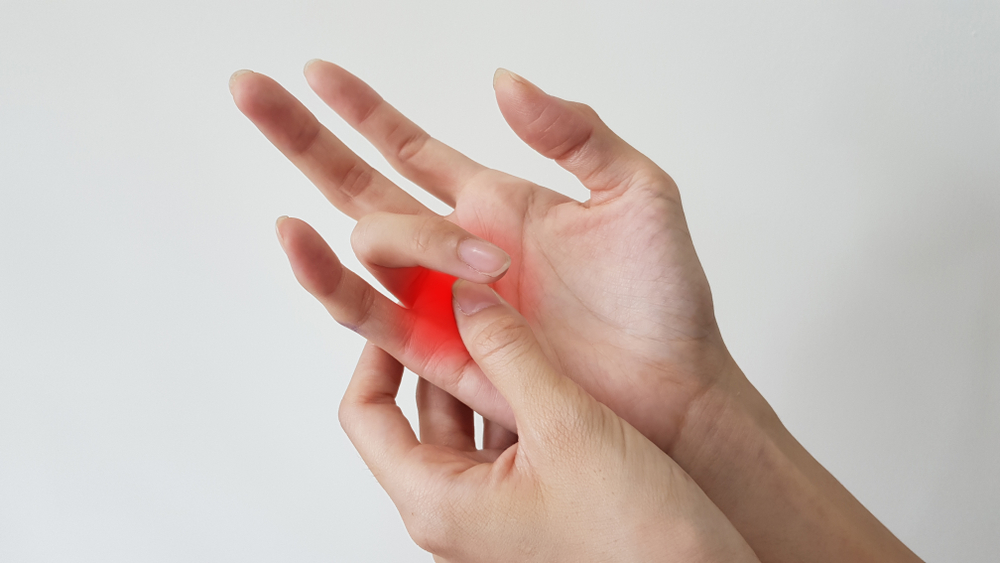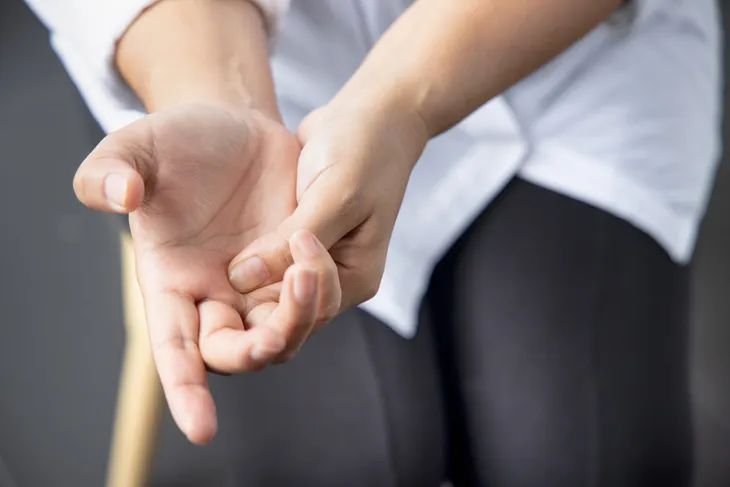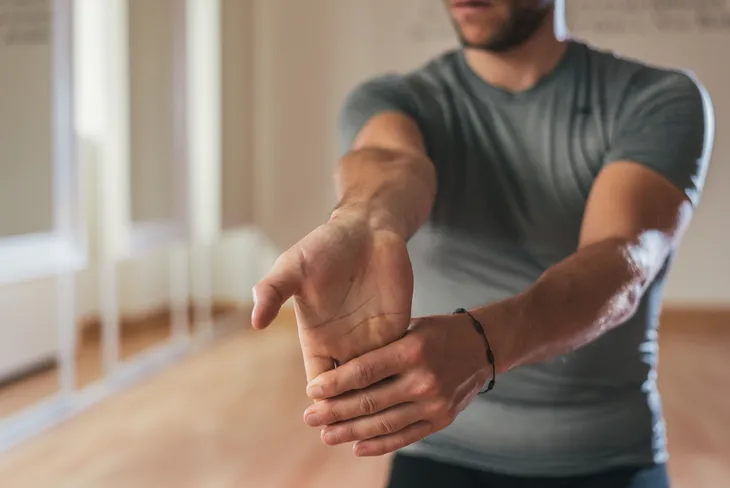There are no firearms to be found here, just a painful, nagging, and debilitating condition that can impact the mobility and functionality of any one of your fingers. Did you know everyone has a 2.6-percent chance of developing trigger finger in their lifetime? That said, women are two to six times more likely to suffer from it.
So, what is trigger finger, what causes it, how do doctors treat it and what can you do to prevent yourself from developing the condition? If you have questions about trigger finger, then you’ve come to the right place. Here is everything you should know about trigger finger.
What Is Trigger Finger?
As far as names go, “trigger finger” is certainly on the nose. Trigger finger, also known as stenosing tenosynovitis, impacts the functionality of a person’s finger or thumb by causing the affected digit to catch or lock when bent. When locked, the finger or thumb appears stuck in a hooked position, not unlike the shape of a finger that’s ready to pull the trigger of a firearm.
Experiencing trigger finger symptoms for the very first time can be unsettling, but rest assured, the symptoms are well documented and not all of the treatments are as invasive as surgery. But before we get there, let’s look at the most common symptoms.
Symptoms of Trigger Finger
Self-diagnosing this condition is never recommended, although self-monitoring for symptoms of trigger finger is quite easy. Sufferers commonly experience a painful clicking or snapping of the affected finger when it’s bent or straightened.
They may also notice stiffness in the finger, soreness, or a bump at the base of the finger or thumb, as well as a popping or clicking sound when the finger is moved. In the more extreme cases, the finger cannot be straightened.
When it comes to trigger finger, symptoms usually start mild and tend to get worse over time. Symptoms are also usually much more pronounced in the morning and tend to ease as the day progresses.
Causes of Trigger Finger
In most cases, trigger finger is the result of prolonged, repeated, and forceful use of the affected finger. Farmers, industrial workers, and musicians are prone to developing it, but symptoms can also arise due to predisposing risk factors.
Your hand is composed of a combination of small bones, tendons, and muscles. If we zoom in on the tendon, you’ll see that tendons act by sliding through a tunnel-like tendon sheath. This sheath is responsible for keeping the tendons in place, and it does so admirably when everything is working correctly. In the hands of those experiencing trigger finger, the tendon sheath is narrowed, which restricts the movement of the tendon, and causes irritation.
Risk Factors
We’ve already established that trigger finger is more likely to occur in individuals with active hands but industrial workers, musicians, and farmers aren’t the only ones that suffer from it. It can also arise because of a pre-existing health condition.
Individuals with diabetes, gout, or rheumatoid arthritis are at a high risk of developing trigger finger. As are individuals between the ages of 40 and 60 and those recovering from carpal tunnel syndrome surgery. Finally, women are also more likely to experience the symptoms of trigger finger than men.
Trigger Finger Treatment
To determine the right treatment for you, a licensed physician will first perform a physical examination of your hand. Then, they will choose between several treatment options based on the severity of your symptoms.
They may suggest rest or if taking time off is difficult, they may suggest that you wear padded gloves. Splinting the affected finger is also a potential solution, as is a routine of stretching exercises, steroid injections, anti-inflammatory medications, or NSAIDs. Severe cases may require surgery.
Trigger finger is the fourth most common reason for referral to a hand surgery clinic. The leading techniques available are percutaneous release surgery and tenolysis release surgery.
Prevention
Preventing the development of trigger finger is difficult for those with pre-existing health conditions. However, those on the job site should try their best to avoid repetitive grasping or gripping motions and vibrating hand-held machinery. They should also keep their distance from anything that worsens their symptoms.
Furthermore, stretching and strengthening exercises are an essential part of preventing trigger finger. Thankfully, through medications, exercises, and even surgery, managing the symptoms of trigger finger and maintaining a fully active lifestyle is possible.









